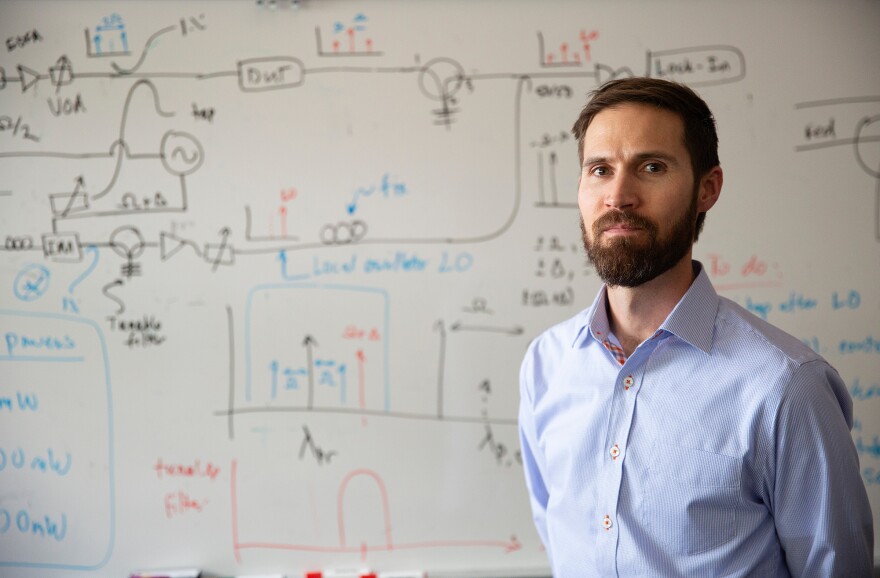Physicists have found a way to transfer information faster and in larger volumes than ever before through the use of light and sound.
A team of scientists has developed a laser that powers silicon photonic chips, a possible replacement for electricity and wires. Ryan Behunin, with Northern Arizona University, is part of the team. He says the laser could mean a massive boost in performance to desktop computers, tablets and smart phones.

“This laser, it uses a unique process where light can scatter from sound. So, one way you can think about this from our daily lives; if you’re driving down a road on a hot day and you look out near the horizon, sometimes you can see a mirage, or you can see ripples, and that’s just due to density fluctuations in the air. So, that’s scattering light, so you can see that effect. In essence, the light-sound scattering that we’re harnessing for this laser is no different than that,” he says.
Ordinarily, light and sound don’t have a strong interaction with silicon. Behunin’s team solved that problem by compressing them into a tiny, racetrack-shaped waveguide on the chip. It works as a conduit for light and sound the way wires work to bring electricity.
“A photonic chip could replace a computer chip in the future. It could be a more efficient and a faster version of a computer chip. This technology would be super useful in order to process information with greater speed and efficiency,” he says.
Behunin predicts this new laser will revolutionize the way we communicate and interact with the world.









